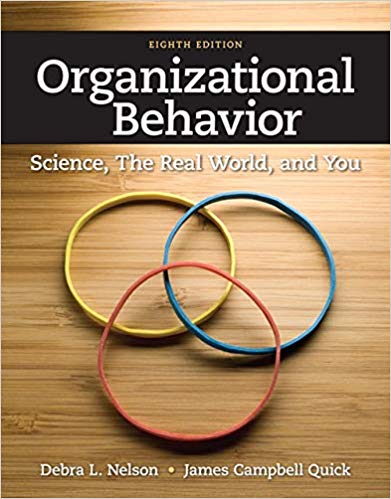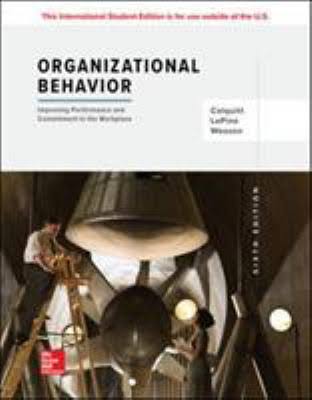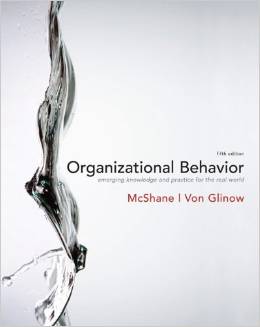ORGANIZATIONAL BEHAVIOR MANAGING PEOPLE AND ORGANIZATIONS 12TH EDITION By RICKY W – Test Bank
|
1. Cognitive dissonance occurs when there is congruence among attitudes, perceptions, and behaviors. a. True b. False ANSWER: False |
|
2. Basic perceptual processes include selective perception and stereotyping. a. True b. False ANSWER: True |
|
3. A person who screens out information because he or she is uncomfortable with the information or the information contradicts his or her belief is affected by stereotyping. a. True b. False ANSWER: False |
|
4. Stress is defined as an individual’s adaptive response to a stimulus. a. True b. False ANSWER: True |
|
5. Stimuli that cause stress are called “stressors.” a. True b. False ANSWER: True |
|
6. When a person first encounters a stressor, the first stage is called alarm. a. True b. False ANSWER: True |
|
7. In the workplace, stress is sometimes a positive factor. a. True b. False ANSWER: True |
|
8. The exhaustion stage of the general adaptation syndrome occurs as a result of prolonged exposure to a stressor without resolution. a. True b. False ANSWER: True |
|
9. Because stress is harmful, it should be eliminated. a. True b. False ANSWER: False |
|
10. Distress is known as the positive form of stress. a. True b. False ANSWER: False |
|
11. Task demands include group pressures, leadership, and interpersonal conflict. a. True b. False ANSWER: False |
|
12. Temperature can create stress in the organizational environment. a. True b. False ANSWER: True |
|
13. Stress in organizational settings is not influenced by events that take place outside the organization. a. True b. False ANSWER: False |
|
14. The two most significant forms of withdrawal behavior are absenteeism and quitting. a. True b. False ANSWER: True |













Reviews
There are no reviews yet.